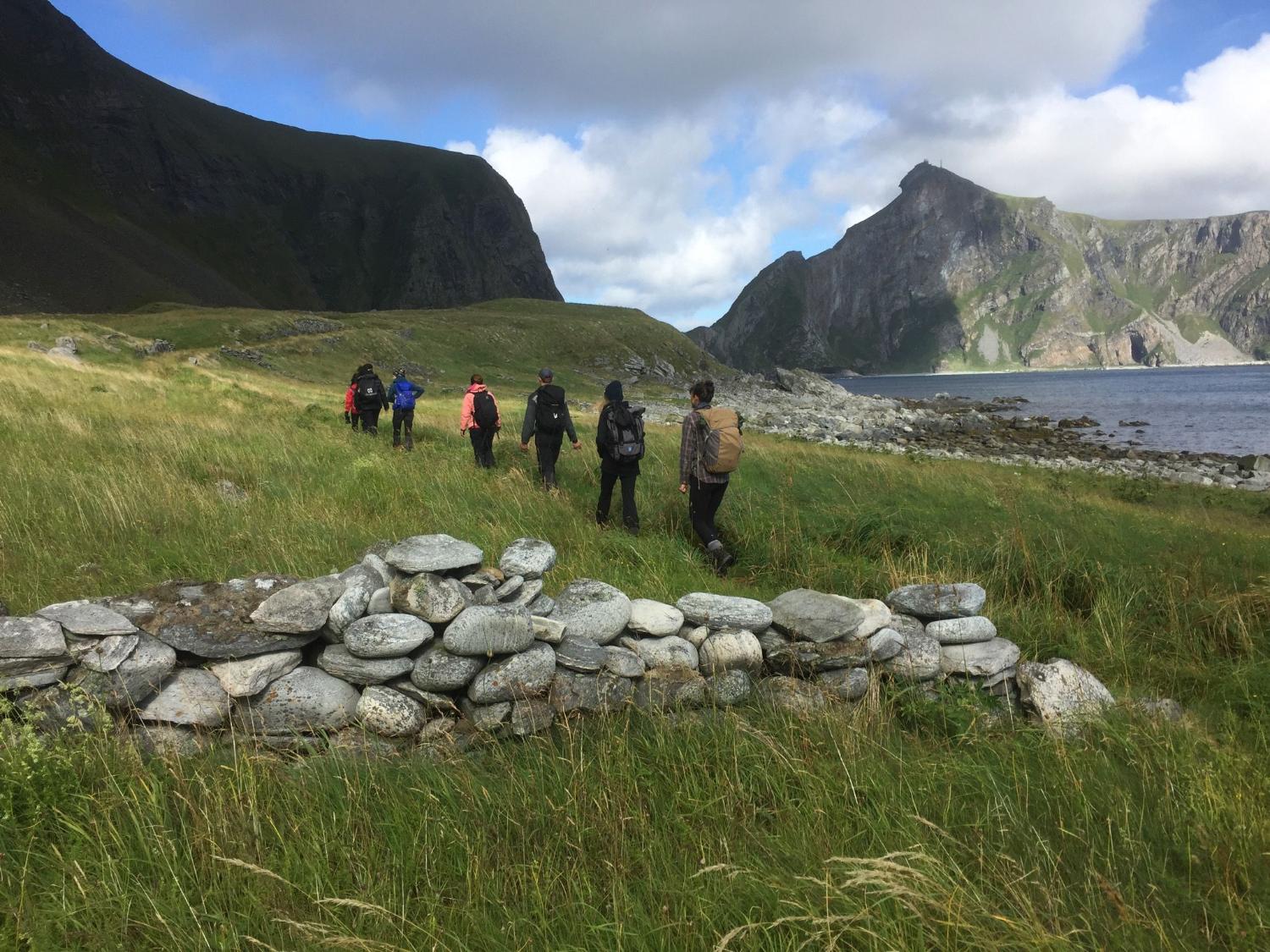Study landscape architecture on a unique programme giving special emphasis to arctic/subarctic conditions. Be part of a creative environment at the Academy of Arts in Tromsø. Learn how to address the design and development of landscapes undergoing rapid change.
This study programme requires compulsory attendance to the introductory meeting.
- Bachelor's degree (180 ECTS) in landscape architecture or equivalent.
- A portfolio documenting landscape architectural work.
- Proof of English proficiency.
In addition, we recommend that applicants have:
- Prior knowledge of ecology
- Prior knowledge and experience with urban planning.
- Prior experience with the use of CAD and GIS.
The portfolio should meet the following criteria:
- Contain 6–8 examples of landscape architectural work (research + design).
- Accompany each example by a written explanation/reflection (100-200 words).
- Indicate whether the work is done individually or as group work.
- Submit the portfolio, you may need to upload several files (maximum 15MB each file).
The assessment of the portfolio gives emphasis to:
- The ability to read and investigate a specific landscape.
- An understanding and sensibility toward landscape dynamics.
- Conceptual thinking and design development.
- The ability to design landscapes at various scales.
- Good communication skills graphically and in writing.
Admission capacity
5 places
Please find more information about international admission here.
Her finner du informasjon knyttet til søking og opptak.
- EU/EEA applicants: 7180
- NON-EU/EEA applicants: 2075
- Nordic applicants: 8053
Program description
The master’s in landscape architecture gives special emphasis to arctic/subarctic conditions. Arctic and subarctic landscapes are undergoing rapid change, which makes it particularly relevant to study how natural and human-made changes impact both society and ecosystems.
Students on the programme learn to practice on diverse spatial and temporal scales to address changes to Arctic and subarctic landscapes. These changes encompass social, climatic, geopolitical, economic, and environmental concerns.
The aim of the study programme is to educate landscape architects who can operate within the framework of a sustainable societal development. Graduates who complete this programme will be equipped with the skills and knowledge to address the design and development of landscapes undergoing rapid change.
Students on the programme study with Scandinavian students undergoing a five-year integrated master’s in landscape architecture with three years of primary education at the Oslo School of Architecture (AHO) and two years of specialization at UiT, The Arctic University of Norway. All students on the programme follow the same curriculum.
Learning outcomes
After passing the course the student will have the following learning outcomes:
KNOWLEDGE
- Have in-depth knowledge about landscape architecture as a practical, artistic, and scientific discipline, its media, history, theories, and methods.
- Be able to master landscape architecture through specialized insight into natural and man-made materials and how they are influenced through composition, delimitation, and design. Dynamic transformation processes in vulnerable landscapes and communities within the Arctic/subarctic are emphasized.
- Be able to use knowledge about the natural, societal, and cultural, and qualify and integrate these into landscape architectural design.
- Be able to critically analyze and discuss how landscape architecture impacts the environment in the short and long term, with particular emphasis on cultural understanding, place, and the relation between the natural and man-made.
SKILLS
- Have a comprehensive ability to analyze critically, qualify, explain, and argue for designs and solutions within landscape architecture through complex planning and project work.
- Be able to independently implement and lead planning and project work within the field of landscape architecture.
- Be able to take a critical position to relevant theories and methods within landscape architecture and maintain an openness for interdisciplinary insight.
- Have the ability to drive scientific and artistic knowledge production within the field, with special emphasis on the landscape architect’s main area of work; design-based project development.
GENERAL COMPETENCE
- Be able to independently analyze, plan and give form to landscape architecture projects of various scales in different local, urban, and territorial contexts. The competency should be directed towards dynamic transformation processes in vulnerable landscapes and communities and be in accordance with professional standards.
- Be able to apply professional knowledge and skills to processes for a society in constant transformation and be prepared to take professional leadership in sustainable societal development.
- Be able to communicate and convey issues, analyses, and conclusions from within the field of landscape architecture to both specialists and the general public as well as contribute to the innovation and development of the field of landscape architecture.
Job prospectives
Most of our graduates from the programme work with landscape architectural design and planning in private companies, local and regional authorities, and diverse government agencies on completion of the master’s programme.
Graduates from the programme are also eligible for admission to a PhD programme.
Degree Name
Master's in landscape architectureStudieplan
Currently not availableLanguage of instruction
English.
Teaching and assessment
Attendance, extensive participation, and the ability to work both independently and collaboratively are expected.
Students are expected to spend a minimumof 40 hours per week on their studies.
More information about the teaching and examination can be found in the description of each individual course.
The most common methods of examination are written examinations, oral examinations, project reports and portfolio assessments, in various combinations.
Exchanges with approved partner institutions can be arranged. Exchanges can take place in the third semester.
Students must have met the exam requirements in accordance with the standard study progression before the exchange can be approved.
To apply for student mobility, you must show the motivation for and reasoning behind your choice of institution by answering the following questions in the form of a personal statement:
- Why do you want to study at this/these particular institutions?
- Is your choice of institution based on any specific professional interest or field of study e.g., regarding your future graduation project?
The reason behind this personal statement is to help the study programme evaluate the student mobility applications and can set the foundation for which institutions is offered to you as possible exchange options. This is especially important in case there are applications from more students than the institution has room for.
You can send your personal statement to the faculty administration at the Academy of Arts via e-mail (kunstakademiet@umak.uit.no) whilst you are applying for student mobility. Any questions you might have can be sent to the abovementioned e-mail addresses.
Destinations for studies abroad
Kjerstin Elisabeth Uhre
Førsteamanuensis i landskapsarkitekturJanne Strømmesen
SeniorrådgiverFølg @uitstudent på Instagram eller TikTok for å få et enda bedre innblikk i hvordan det er å studere på UiT. Her viser studentene fram sin studiehverdag, deler tips og nyttig informasjon, og du kan stille spørsmål om alt du måtte lure på.
Sjekk også @uitnorgesarktiske på Instagram eller TikTok for info om studier, jobbmuligheter og forskning.



